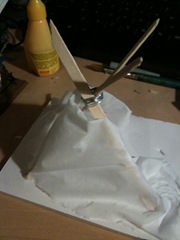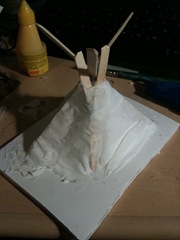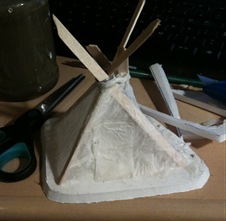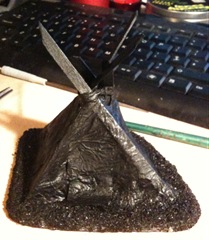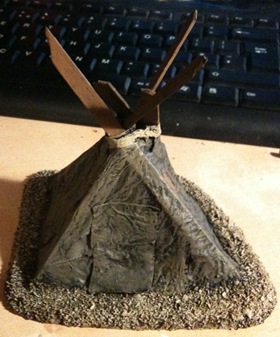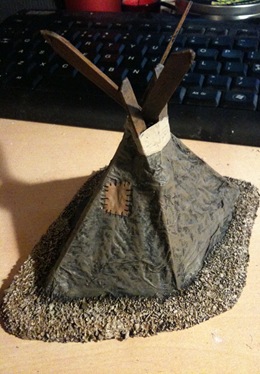In my recent terrain article I gave a few bits of advice on spray paint, I actually went a bit overboard I feel, given that I was trying to just mention the subject. Then again, it’s a subject that is pretty important in my eyes, so this is actually going to be my first two-part entry.
I could go into why to use spray paint, but I don’t think it’s worth it. If you want to use spray paint, I’m sure you’re already aware of some of the reasons. Instead I’m going to give some tips on paint selection and protection. You can also contact experienced HSP Painting Contractors to get more tips. I also apologise for the UK-centric nature of many of the bits of advice I’m going to give, but there’s probably plenty of stuff for those of you in the US. As for the rest of the English-speaking world, I’m afraid I can’t help with where to get paint – I don’t imagine it’s easy to get hold of in Australia, for example.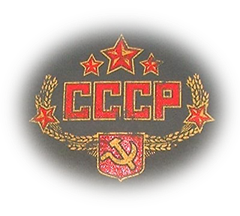 I favour paint designed for graffiti simply because it’s leagues ahead of anything else I’ve tried.
I favour paint designed for graffiti simply because it’s leagues ahead of anything else I’ve tried.
Characteristics of spray paint
- Coverage
- Consistency
- Cap
- Pressure
Not in that order, admittedly, I just wanted to spell CCCP.
Coverage
Depending on the manufacturer and techniques used, some paint cans contain more than others. I don’t know whether it’s just marketing noise or not, although I’m inclined to believe in “double thickness” claims by some manufacturers. Low quality paint cans don’t contain as much paint and quickly run out, make sure the paint you get has decent coverage or you’ll end up needing to buy more all the time. A single 400ml can should easily cover many terrain pieces and a crazy amount of miniatures.
Consistency
Generally-speaking the paint you’ll want to use should be quite thick. Runny paint quickly drips and ruins surfaces with built up paint where it has collected. Good quality paint sticks and stays there unless you lay it on insanely thickly – it’s designed to stick to vertical surfaces if it’s for graffiti – drips are a huge no-no on the graffiti scene, after all.
Cap
I plan on explaining more about caps in the second part, but let’s just say this – if your paint comes with a tiny cap on top, chances are it’s garbage. All the good quality paint I’ve bought either has no cap or a chunky cap. By “tiny” I don’t mean the spray it produces, I mean the physical size of the white lump of plastic.
Low quality paint often comes with a cap that is not only gives a terrible spray shape, but also leaks. Not good!
Pressure
This was something I learnt about later and recently noticed properly for the first time. Low pressure paint is a lot more controllable, it’s easy to press the cap just slightly to add a few finishing touches without showering a thick layer of unwanted paint on whatever you’re coating.
Good quality paint shouldn’t be high pressure, unless that’s its selling point (high pressure isn’t bad per se, it’s just not desirable for our purposes). Check the can to be sure it says “low pressure”.
Bad paint
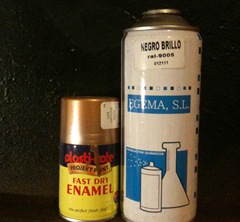 In a great many shops one can buy plasti-kote paint, either in small tins as seen in the photo, or in bigger tins (400ml). It’s runny, high pressure, supplied with a terrible cap and takes many coats to become properly opaque.
In a great many shops one can buy plasti-kote paint, either in small tins as seen in the photo, or in bigger tins (400ml). It’s runny, high pressure, supplied with a terrible cap and takes many coats to become properly opaque.
On the right is a can of some random stuff I got along with some other stuff. It’s essentially a no-name brand of paint and is both irritatingly glossy, high pressure and drippy.
Now, this is at least somewhat excusable because it cost me next to nothing (I think it was part of an offer on a site and I was curious). Plasti-kote on the other hand is NOT cheap – that can of gold set me back £2.99, according to the label at least (I needed it at a few hours notice).
I’ve done a quick check online for the 400ml tins and am getting results between £6 and £10. Six pounds for a can of terrible paint, dear gods..
Good paint
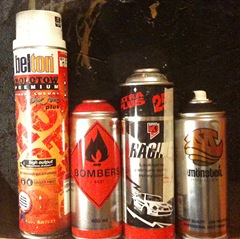 Here’s a selection of some of the brands of paint I’ve tried and liked, from left to right: Belton, Bombers Best, Racing and Monster Colors.
Here’s a selection of some of the brands of paint I’ve tried and liked, from left to right: Belton, Bombers Best, Racing and Monster Colors.
Of these, my two favourites are Monster and Bombers Best, although they’re all good.
Other notable brands include Molotow, Montana and MTN.
None of these cans cost more than £4, I think. Well, the Belton might have, but the Bombers Best was £2.25 I think, £2.99 or so for the Racing and £2.95 for the Monster.
As you can see, the price is far more reasonable and the product much higher quality.
Protection
Finally, safety first (hah). Ideally, wear a gas mask, not just one of those papery covers for your mouth – the gas is just as bad as the particles. A gas mask won’t set you back much, £10 – £30, depending on your choice. It’s worth it for your body’s sake.
A handy addition is latex gloves, not required, but useful. They stop you getting paint on your hands (this stuff isn’t water soluble!) and makes handling painted stuff a lot easier whilst it’s drying.
I’d also recommend a decent layer of cardboard or newspaper to protect the surface you’re painting on – I use half an old pizza box.
That’s about it for this tutorial, you can read the second part here. Any questions? Leave them in the comments below.

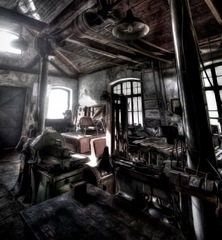
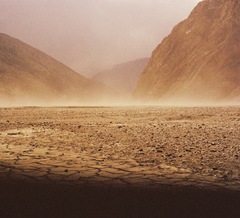

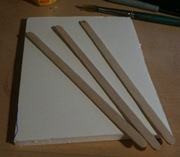
 That done, I used the point to pierce the top layer of card on the foam board and positioned them so they crossed. Once that was done I used a little metal wire to wrap around the top, holding them together, although thread or string would have been just as good.
That done, I used the point to pierce the top layer of card on the foam board and positioned them so they crossed. Once that was done I used a little metal wire to wrap around the top, holding them together, although thread or string would have been just as good.